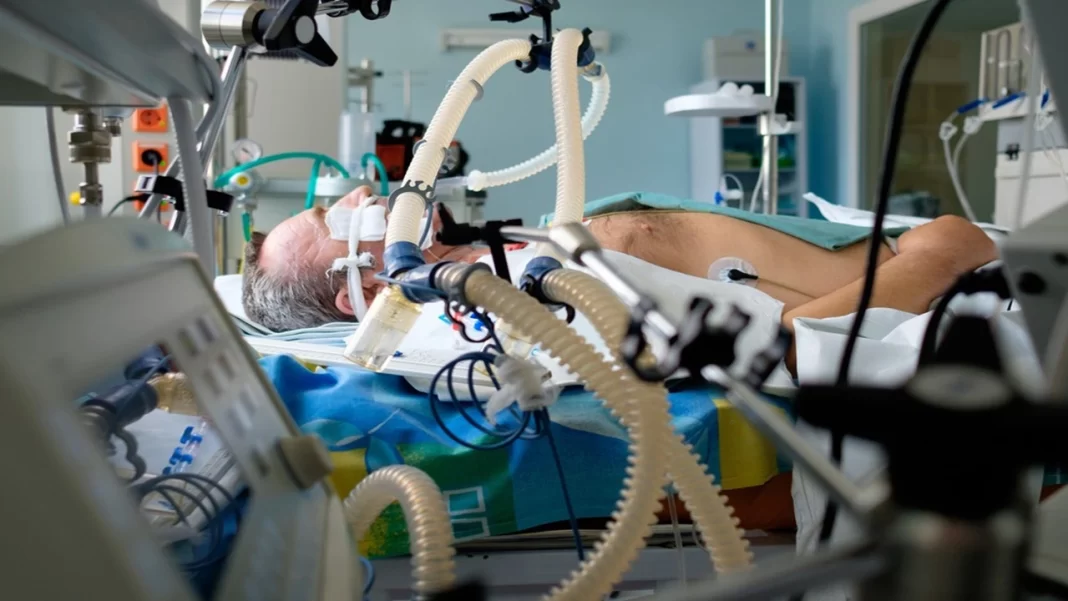The health ministry has laid down guidelines for ICU admission and discharge in the country and these are based on the severity of organ failure and the necessity for organ support
The Union Health Ministry recently issued comprehensive guidelines for hospitals across the country regarding Intensive Care Unit (ICU) admissions. The guidelines, released by the Directorate General of Health Services, specify standard criteria for admissions and discharge as well as the circumstances under which patients should not be moved into ICUs such as terminally-ill patients with a medical judgment of futility. The guidelines emphasise the importance of obtaining prior consent from patients or their relatives before admission of critically ill individuals to the ICU.
Developed by a panel of 24 eminent physicians, which include experts from Dubai and Canada, the primary focus of the guidelines is on ensuring that ICU admissions are based on the severity of organ failure and the necessity for organ support or in anticipation of a potential deterioration in the patient’s medical condition.
Parameters such as blood pressure, pulse rate, respiratory rate, breathing pattern, heart rate, oxygen saturation, urine output and neurological status are highlighted as critical indicators that should be continuously monitored for patients awaiting an ICU bed.
One of the key recommendations of the expert panel is that critically ill patients should not be admitted to the ICU if there is a pre-existing treatment limitation plan for any underlying disease. Additionally, individuals with a living will or advanced directive explicitly against ICU care, as well as those deemed terminally ill with a medical judgment of futility, are advised not to be admitted to the ICU.
The guidelines also address scenarios where resource limitations are prevalent, such as in a pandemic or disaster situation. In such cases, individuals with low-priority criteria are advised against ICU admission.
For ICU discharge, the guidelines stress the importance of physiological parameters returning to near-normal or baseline status. Furthermore, reasonable resolution and stability of the acute illness that led to ICU admission are essential factors. Patient and family agreement for ICU discharge, particularly in cases where a treatment-limiting decision or palliative care is opted for, is also highlighted. Despite their significance, these guidelines are not without challenges.
In emergency situations, such as severe trauma cases, say in an accident, if the patient has been brought to the hospital by a Good Samaritan and is in a critical condition, obtaining consent might be impractical, potentially delaying critical care. The guidelines also do not explicitly address the rights of intensivists regarding independent admission under critical care teams.
One immediate concern highlighted is the current state of ICU management in smaller hospitals where intensivists are often unavailable. These ICUs are typically overseen by duty doctors, relying heavily on telephonic consultations with consultants. This set-up is inadequate due to the specialised knowledge and skills required for ICU care.
On a positive note, the guidelines recognise MBBS doctors with a three-year intensive care certificate course as qualified to serve as intensivists, broadening the pool of eligible professionals. This inclusion is a welcome move, particularly for enhancing critical care in regions with limited access to traditionally qualified specialists.
Furthermore, the guidelines’ exclude AYUSH doctors from being recognised as intensivists. This is seen as a significant and necessary distinction by many doctors.
India has about a lakh of ICU beds, the majority of which are found in private hospitals, where the price is five to ten times higher than that of a regular bed. Poor people who cannot afford private hospitals have to struggle, sometimes without success, to get an ICU bed. The idea of prioritising patients for ICU care based on their condition may be good for a disaster situation, but in general, the government should work towards ensuring enough facilities to provide critical care to all.
The guidelines for admission of patients to ICU have been issued more than seven years after the Supreme Court took cognizance of the issue. The Supreme Court had asked the central government, and the erstwhile Medical Council of India, which has now been replaced by the National Medical Commission, to answer whether any guidelines are prescribed for private hospitals on providing care to patients in the ICU and Critical Care Unit (CCU).
The bench of Justices Dipak Misra and Uday Umesh Lalit gave the directive while hearing a medical negligence complaint filed by Kalyani (in West Bengal) resident Asit Baran Mondal, whose daughter-in-law, Sunanda, died in a city hospital off the EM Bypass on December 29, 2013. The Court asked the health secretaries to come up with an ICU-CCU treatment guideline. The case will be heard again in October.
Sunanda was under the treatment of a gynaecologist at Kalyani since May 2013 after she conceived for the second time. Complications in her pregnancy started from August. On December 14, her condition deteriorated and she was admitted to a Kalyani nursing home, where she delivered a daughter after a Caesarean operation and underwent ligation. The next day, though Sunanda was critical, the gynaecologist did not attend to her, Majumder alleged. On December 16, as her condition turned critical, Sunanda was treated by another physician. The next day, she was shifted to a city hospital, where doctors described her as extremely critical. She died of multi-organ failure.
Mondal had earlier filed a complaint with the National Consumer Disputes Redressal Commission (NCDRC) against the Kalyani-based nursing home and the gynaecologist claiming compensation of Rs 1.96 crore. He moved the apex court when NCDRC turned down his plea. Mondal’s counsel Robin Majumder told the Supreme Court that there was no standard protocol of treatment in ICU-CCUs of private hospitals, as neither the centre nor state governments had laid down any guidelines.
There was no minimal standard for treatment in ICU-CCU in India, although some clinical establishment acts mention it. Thus, many nursing homes and hospitals continue to admit critical patients leading to disastrous results.
—By Abhilash Kumar Singh and India Legal Bureau


